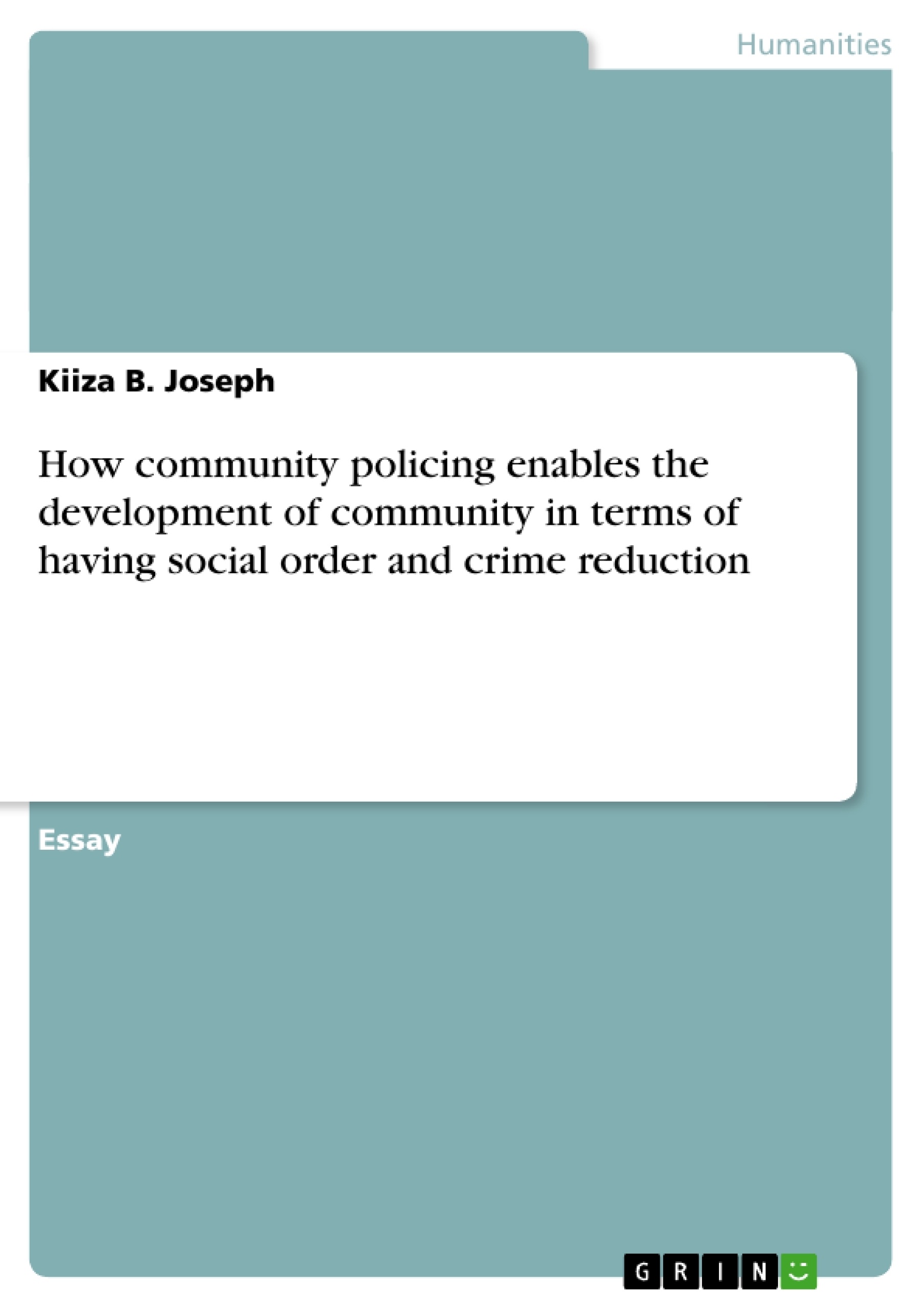This research examines how community policing enables the development of community in terms of having social order and crime reduction. One rationale for public involvement is the belief that police alone can neither create nor maintain safe communities , thus a need for the whole community in maintaining social order and putting crime reduction strategies to create a safe environment for people to operate and this can only be achieved through the philosophy known as community policing.
Inhaltsverzeichnis (Table of Contents)
- I. Introduction
- II. Methodology
- III. Historical Background of Community Policing
- IV. What is Community Policing
- Community Partnerships
- Organizational Transformation
- Problem Solving
Zielsetzung und Themenschwerpunkte (Objectives and Key Themes)
This research aims to examine how community policing fosters community development by promoting social order and crime reduction. It explores the historical context of community policing, its core principles, and its effectiveness in achieving these goals.
- The historical evolution of community policing.
- The core principles and elements of community policing (partnership, transformation, problem-solving).
- The role of community involvement in crime reduction and social order.
- The relationship between community policing and community development.
- The functions performed by community policing in achieving social order and crime reduction.
Zusammenfassung der Kapitel (Chapter Summaries)
Chapter I: Introduction introduces the research topic, highlighting the limitations of solely police-driven approaches to safety and the importance of community engagement in maintaining social order and reducing crime. It establishes the rationale for community involvement in policing within a democratic context.
Chapter II: Methodology outlines the research methodology, relying on secondary data sources such as books, websites, online reports, and the researcher's experience in the field.
Chapter III: Historical Background of Community Policing traces the historical development of community policing, starting with the London Metropolitan Police District in 1829 and Sir Robert Peel's influential contributions, emphasizing the initial reactive nature of policing and the subsequent shift toward proactive community engagement. It notes the adoption of community policing models in various countries.
Chapter IV: What is Community Policing defines community policing as a proactive partnership between police and the community to reduce crime and improve safety. It details the three key elements: community partnerships, organizational transformation, and problem-solving. The chapter emphasizes the importance of community involvement and the collaborative nature of problem-solving, using the SARA model as an example. It also discusses the role of community policing in addressing broader community issues.
Schlüsselwörter (Keywords)
Community policing, crime reduction, social order, community development, community partnership, problem-solving, organizational transformation, SARA model, proactive policing, police legitimacy, public safety.
- Quote paper
- Kiiza B. Joseph (Author), 2011, How community policing enables the development of community in terms of having social order and crime reduction , Munich, GRIN Verlag, https://www.grin.com/document/183271



